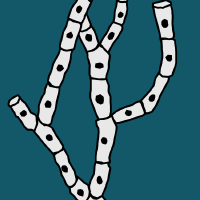Topic Menu
► Topic MenuTopic Editors

Fungal Infections in Immunocompromised Hosts
Topic Information
Dear Colleagues,
Despite significant progress being made due to the scaling up of antiretroviral therapy, advanced HIV disease remains a major public health problem worldwide. Late diagnosis and follow-up interruption ensure that a substantial number of persons have low CD4 counts and are thus at risk of developing opportunistic infections. Fungi are among the most frequent opportunistic pathogens and are a major cause of death. However, the magnitude of the problem has not yet been clearly measured, and the different ecosystems across the world lead to differences in the respective incidence of specific fungal pathogens. This may come as a surprise 40 years after the discovery of AIDS, but many regions across the world—often those with low resources—struggle to identify fungal pathogens. Knowledge of one’s regional epidemiology is, hence, essential to guide diagnosis and presumptive treatment while waiting for diagnostic confirmation. Furthermore, the use of immunosuppressive therapy has greatly expanded the number of persons at risk for invasive fungal pathogens. As for advanced HIV, the respective burden of different fungi is often still sketchy.
This Research Topic welcomes articles from different areas of the world describing the respective importance of the main invasive fungal infections in immunocompromised patients—cryptococcosis, histoplasmosis, pneumocystosis, talaromycosis, aspergillosis, invasive candidiasis, etc. The description of this diversity aims to improve our knowledge of the contrasted epidemiological contexts across the world and help improve care of patients in or coming from different regions.
Prof. Dr. Mathieu Nacher
Topic Editor
Participating Journals
| Journal Name | Impact Factor | CiteScore | Launched Year | First Decision (median) | APC |
|---|---|---|---|---|---|

Journal of Fungi
|
4.7 | 4.9 | 2015 | 18.4 Days | CHF 2600 |

Viruses
|
4.7 | 7.1 | 2009 | 13.8 Days | CHF 2600 |

Microbiology Research
|
1.5 | 1.3 | 2010 | 16.6 Days | CHF 1600 |

MDPI Topics is cooperating with Preprints.org and has built a direct connection between MDPI journals and Preprints.org. Authors are encouraged to enjoy the benefits by posting a preprint at Preprints.org prior to publication:
- Immediately share your ideas ahead of publication and establish your research priority;
- Protect your idea from being stolen with this time-stamped preprint article;
- Enhance the exposure and impact of your research;
- Receive feedback from your peers in advance;
- Have it indexed in Web of Science (Preprint Citation Index), Google Scholar, Crossref, SHARE, PrePubMed, Scilit and Europe PMC.

